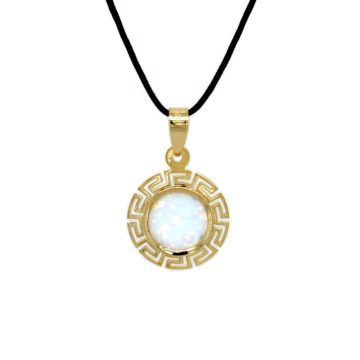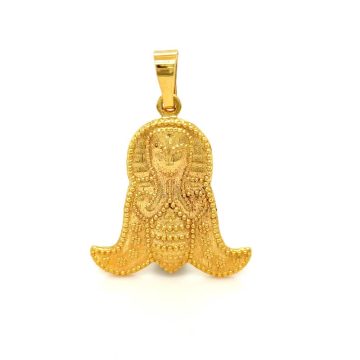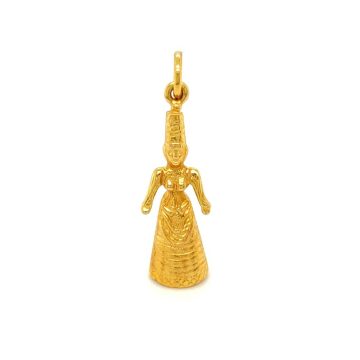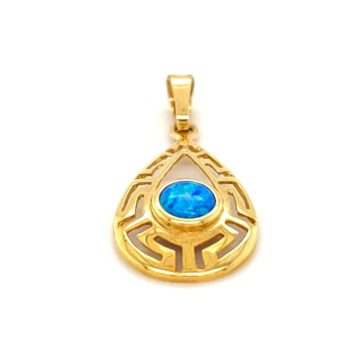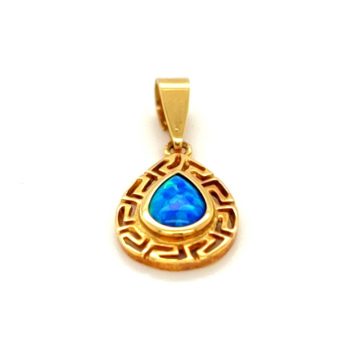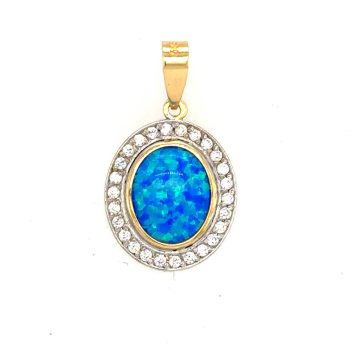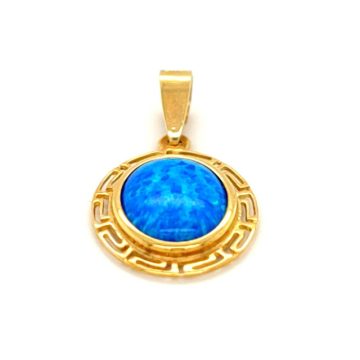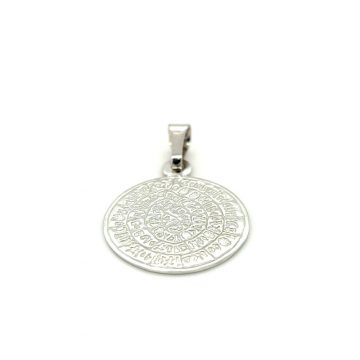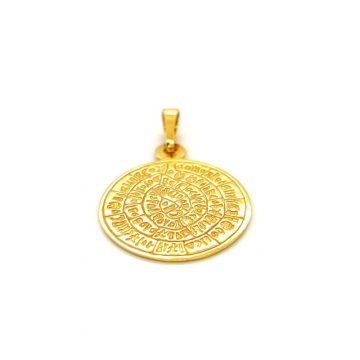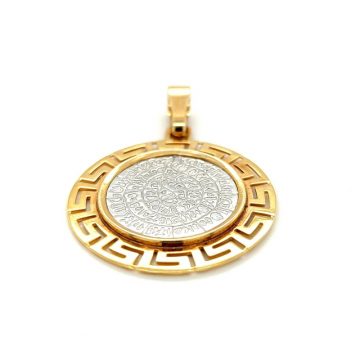Pendant with black cord, gold K14 (585°), white artificial opal with a wreath of meander
Women’s pendant made of gold K14 (585°) with Meander symbol and artificial opal in white color ,which is accompanied by a black cord.. Meander is the most ancient Greek symbol, Victory and Unity, a symbol of Infinity and Eternal Life. Inspired, in the opinion of some academics, by the numerous turns of the river Meander. …
Pendant, gold K14 (585°), The Godness bee of ancient Eleftherna
Women’s pendant made of gold K14 (585 °). The “Ancient Bee of Eleftherna” refers to a mythical myth or tradition of the ancient city of Eleftherna, where the goddess-bee protected people and made amulets in her form. This history, as it seems, is part of the cultural heritage of the area, as the Museum of Ancient …
Pendant, gold K14 (585°), The Godness with the Snakes
Women’s pendant made of gold K14 (585 °). The Goddess with the snakes is the name of the type of statuette found in excavations at the Minoan archeological sites that shows a woman holding snakes. The statuette dates back to the 16th century BC. This statuette is on display today at the Archaeological Museum of …
Pendant, gold K14 (585°), artificial opal with a wreath of meander
Women’s pendant made of gold K14 (585°) with Meander symbol and artificial opal. Meander is the most ancient Greek symbol, Victory and Unity, a symbol of Infinity and Eternal Life. Inspired, in the opinion of some academics, by the numerous turns of the river Meander. Meander is used in pottery, temples, monuments, sculptures, objects, weapons, …
Pendant, gold K14 (585°), artificial opal with a wreath of meander tear
Women’s pendant made of gold K14 (585°) with Meander symbol and artificial opal. Meander is the most ancient Greek symbol, Victory and Unity, a symbol of Infinity and Eternal Life. Inspired, in the opinion of some academics, by the numerous turns of the river Meander. Meander is used in pottery, temples, monuments, sculptures, objects, weapons, …
Pendant, gold K14 (585°), artificial opal with a wreath of meander tear
Women’s pendant made of gold K14 (585°) with Meander symbol and artificial opal. Meander is the most ancient Greek symbol, Victory and Unity, a symbol of Infinity and Eternal Life. Inspired, in the opinion of some academics, by the numerous turns of the river Meander. Meander is used in pottery, temples, monuments, sculptures, objects, weapons, …
Pendant, gold K14 (585°), artificial opal and zirgon
Women’s pendant made of gold K14 (585°) with artificial opal and zirgon. .
Pendant, gold K14 (585°), artificial opal with a wreath of meander oval
Women’s pendant made of gold K14 (585°) with Meander symbol and artificial opal. Meander is the most ancient Greek symbol, Victory and Unity, a symbol of Infinity and Eternal Life. Inspired, in the opinion of some academics, by the numerous turns of the river Meander. Meander is used in pottery, temples, monuments, sculptures, objects, weapons, …
Pendant, gold K14 (585°), artificial opal with a wreath of meander
Women’s pendant made of gold K14 (585°) with Meander symbol and artificial opal. Meander is the most ancient Greek symbol, Victory and Unity, a symbol of Infinity and Eternal Life. Inspired, in the opinion of some academics, by the numerous turns of the river Meander. Meander is used in pottery, temples, monuments, sculptures, objects, weapons, …
Pendant, gold K14 (585 °), Disc of Phaistos
A pendant made of gold K14 (585°) with Disc of Phaistos. The Disc of Phaistos is a disk of baked clay, which is an archaeological find from the Minoan city of Phaistos in southern Crete and probably dates to the middle or late Minoan Bronze Age . It is one of the most famous mysteries …
Pendant, gold K14 (585 °), Disc of Phaistos
A pendant made of gold K14 (585°) with Disc of Phaistos. The Disc of Phaistos is a disk of baked clay, which is an archaeological find from the Minoan city of Phaistos in southern Crete and probably dates to the middle or late Minoan Bronze Age . It is one of the most famous mysteries …
Pendant, gold K14 (585 °), Disc of Phaistos with meander, two-tone gold
A pendant made of two-tone gold K14 (585°) with the Disc of Phaistos and a meander wreath. The Disc of Phaistos is a disc of baked clay, which is an archaeological find from the Minoan city of Phaistos in southern Crete and probably dates to the middle or late Minoan Bronze Age. It is one …

